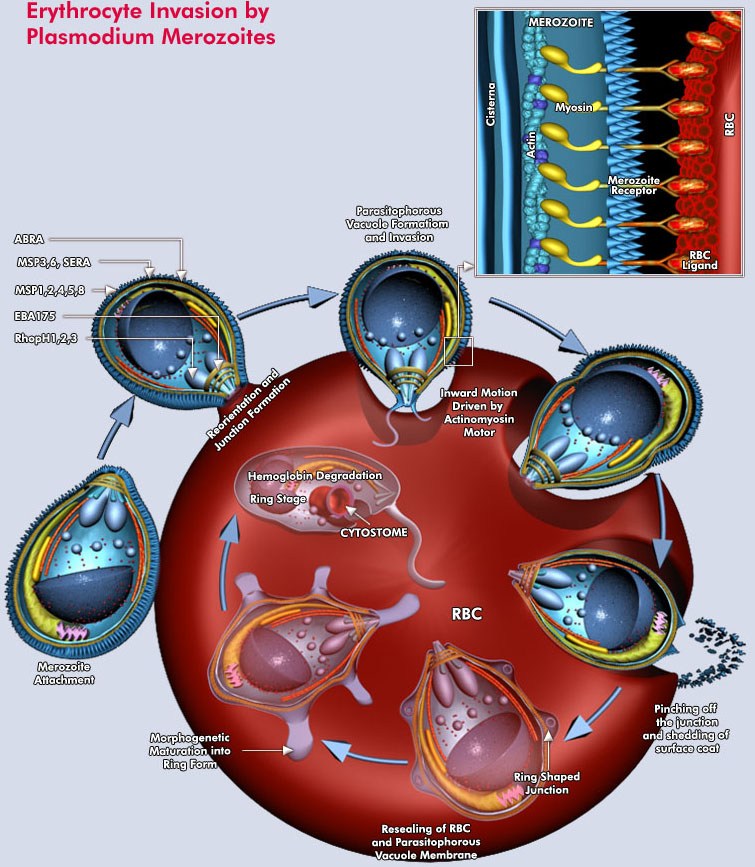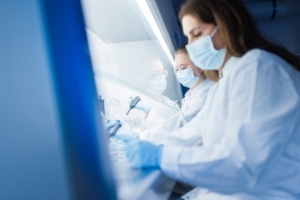
Locking malaria parasites into red blood cells
UK researchers headed by Michael Blackman have found out that a proteolytic cascade regulates release of merozoites of the human malaria parasite Plasmodium falciparum from host red blood cells. Inhibitition paves the way to block the parasite's egress.
The findings reported in Nature could help prevent over 400,000 deaths per annum that are caused to widespread drug resistance of the parasite, whose asexual blood stages proliferate within red blood cells.
Development stages of Plasmodium replicate within a parasitophorous vacuole in red blood cells. Progeny merozoites egress upon rupture of first the parasitophorous vacuole membrane then poration and rupture of the red blood cell membrane.
While it was known that egress is protease-dependent, so far no effector molecules that mediate membrane rupture had been identified. Now, the UK researcher from the Francis Crick Institute in London demonstrated that Plasmodium falciparum parasites lacking the protease SUB1, which is discharged into the parasitophorous vacuole minutes before egress, undergo none of the morphological transformations that precede egress and fail to rupture the parasitophorous vacuole membrane. Parasites, which were depleted from SERA6, a putative cysteine protease that is cleaved by SUB1 along with other proteases, however, showed rupture the parasitophorous vacuole membrane and poration but not rupture of the red blood cell membrane (RBCM).
Further complementation studies showed that SERA6 is an enzyme that requires processing by SUB1 for its function. RBCM rupture is associated with SERA6-dependent proteolytic cleavage within the actin-binding domain of the major red blood cell cytoskeletal protein ?-spectrin. The researchers conclude that SUB1 and SERA6 play distinct, essential roles in a coordinated proteolytic cascade that enables sequential rupture of the two bounding membranes and culminates in RBCM disruption through rapid, precise, SERA6-mediated disassembly of the RBC cytoskeleton. The researchers are screening for antibodies to target the pathway.


 Cellular Origins Ltd
Cellular Origins Ltd SLAS
SLAS